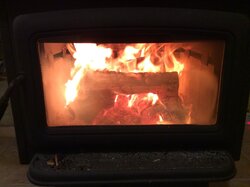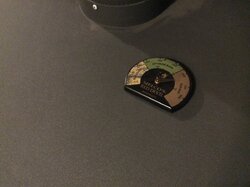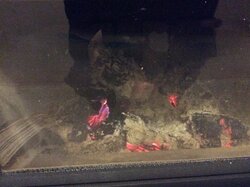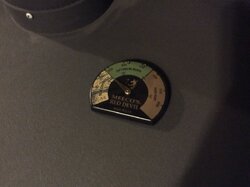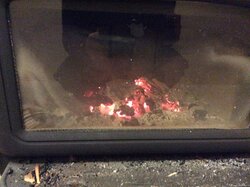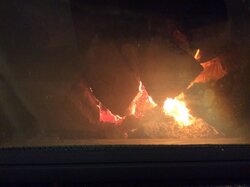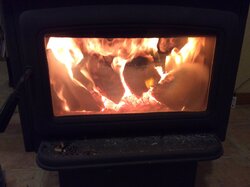They find that warmth quickly.
You'll be needing some better hearth protection there. Embers can and will pop out sometimes. Is there a plan to extend the hearth?
Yes, we don't currently meet the minimum.
We're going to get a basic hearth extension pad to throw down in front of the current hearth and on top of the carpet.



